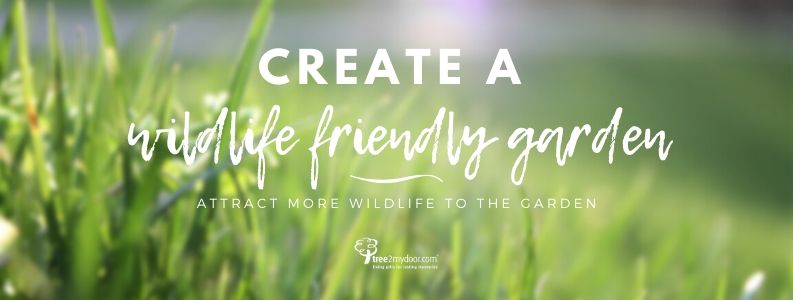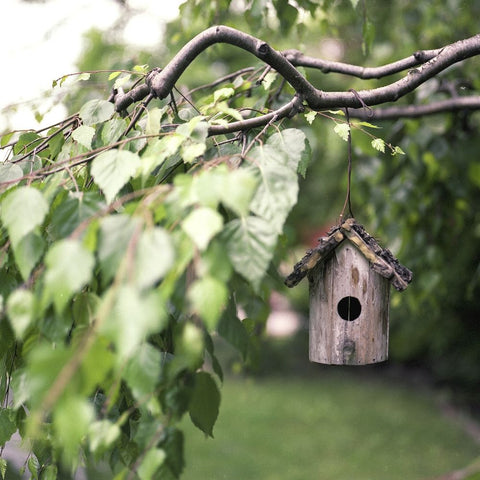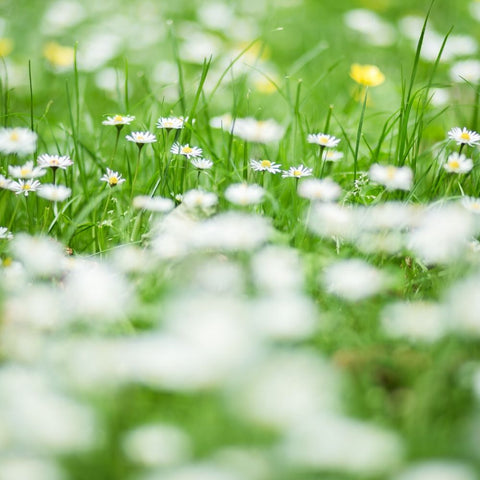
Are you looking to create a wildlife haven in your garden? Do you want to find ways to be closer to nature right in your back garden? Maybe you’ve noticed.
In this post we will cover:
- Top tips to create a wildlife-friendly garden
- What trees and plants attract an abundance of wildlife
- How to be mindful and conduct wildlife-friendly gardening throughout the year
So, whether you’re trying to attract more birds, bees, mammals or insects our guides got you covered. Keep reading our guide and throughout the year your garden will be a haven for every type of wildlife.
Wildlife Friendly Gardening
How to Build a Wildlife Friendly Garden
1) Bird Feeders and Boxes

Go out and buy or DIY some wooden bird boxes and feeders for the garden. Create safe nesting sites for birds to live and feed throughout the year. If you don’t want the plastic of a bird feeder in the garden, opt for something like a fat ball to hang from the tree. You may find new birds coming to nest each year or even some repeat visitors. Keep birds safe from harm by ensuring everything it out of reach of cats.
2) Build a pond
Permitted if you have space, ponds are a fantastic way of bringing new and interesting wildlife to the garden that you won’t get any other way. Expect to get some visits from frogs, newts and maybe even a dragonfly or two.
3) Create a bug hotel
For those without space for a pond, instead, try creating an insect or bug hotel. Usually made from wood and bamboo twigs this will keep beneficial insects in the garden giving them a safe place to go.
4) Start a compost heap
Beneficial for you, your garden and the wildlife. You can put fresh food waste in the compost to create a home for worms, woodlice and many others. The compost will enrich your garden allowing you to grow even more beautiful trees and plants to attract more wonderful wildlife.
What to Plant to Attract Wildlife
1) Early flowering trees

Trees and plants that bloom early spring are important for very early pollinators. Varieties such as magnolia trees and flowering cherry trees are the perfect options. While we see many bees about the garden in summer there are a few that come out of hibernation in early spring along with some species of beetle that will enjoy stopping off in your garden for a quick drink.
Adding one or two small flowering trees to your garden will provide early pollinators with much-needed nectar for the season ahead. Smaller varieties include our star magnolia tree and the dwarf Japanese flowering cherry tree or for a vibrant pop of colour our seasonal pink magnolia tree might be the one for you.
2) Wildflower Beds
Wildflower gardens are heaven-sent for bees and butterflies. Scatter your wildflower seeds across the soil, wait and watch wild yet beautiful flowers start to blooms each year in the summer. The colour and fragrance will attract wildlife by the plenty acting as a nectar-rich food source for insects.
3) Plant more native species
Native trees and plants are a very important part of our overall ecosystem. Never underestimate the power of adding more native varieties to your garden. As more exotic trees and plants become accessible it’s desirable to want to add them to your collection, some non-native species have known to become invasive and end up harming more than helping.
As an ecosystem, your garden and wildlife within will benefit from native varieties. They are more naturally suited to our climate and weather conditions and provide a vital source of food and shelter to many UK animal species. You can read more about why native trees are important on our blog.
4) Any beautiful flowering tree or fruit trees
Any trees or plants that produce an annual crop or beautiful blooms will provide the garden with everything it needs to house wildlife. From acorns on the oak tree, fruits on the apple tree or beautiful blooms on rose bushes.
Wildlife Friendly Gardening Guide
While there are plenty of proactive things to do in the garden to create safe and interesting spaces for local wildlife there are also some other things to consider when gardening throughout the year.
1) Go organic
You may be tempted to use chemicals on your garden to rid of unwanted pests and greenery but there is plenty of other natural or organic ways to deter any unwanted visitors.
If you’re just getting started our tree planting packs and rose planting pack are the perfect option. They are safe from harmful chemicals and provide the best start in life to all your trees and plants.
2) Don’t keep on top of the weeding

While this might be frustrating for some, weeds such as nettles, dandelions and buttercups are a natural attractor of wildlife and provide them with vital nutrients.
3) Leave your grass to grow long and check for animals
Long grass is an underestimated way of providing much-needed shelter and food for various animals and other critters. Towards the end of summer leave your grass to grow slightly longer and then plan to cut it in spring. Keep an eye out for any large mammals that may be hiding between the blades of grass as to not cause injury when mowing.
4) Leave out some stick and leaf piles
When tidying the garden leaves a couple of leaf or stick piles for hedgehogs in the autumn. As long as they don’t get too wet giving them a chance to mould they will be a cosy place for them to hide.
Above is just a few ways that you can make your garden more wildlife-friendly. We’d love to hear any things you’ve done to take part in more wildlife-friendly gardening, get in touch on social media or email.


